An extensive overview written by my friend Chris Buhl.
Please enjoy.
I’ve recently discovered this Print ‘n Play game thanks to a thread on BGG. Since I want to get this game some publicity, and since I’ve long wanted to try my hand at writing a review, I’m going to do that now. This is the official description of the game from its BGG entry:
I’ve recently discovered this Print ‘n Play game thanks to a thread on BGG. Since I want to get this game some publicity, and since I’ve long wanted to try my hand at writing a review, I’m going to do that now. This is the official description of the game from its BGG entry:
“Table Air Combat is a fast, simple air combat game that can be played on any flat surface. Each player has a flight of fighters, represented by two-sided counters. Aircraft counters move by means of curved “performance rulers” that represent the aircraft’s historical cornering ability and maximum speed. Each performance ruler is unique to each aircraft, and contains all the speed, cornering, and weapon information needed. TAC is designed for portability. The entire game can fit in a plastic bag. Even the largest battles can take place on a fast-food restaurant table.“
That sounds pretty simple, right? I think there is a lot of goodness under the surface of that brief (and accurate, except that you aren’t limited to fighters, as bombers of all shapes and sizes are part of this package) description. I’ll hopefully convince you to feel the same way.
WHAT’S IN THE GAME / WHAT IS THE GAME?
Table Air Combat, in BGG terms, is actually a game family. Each “game” in the family is a single plane. From now on I’m just going to call them planes, not games. Each plane has its own .pdf file which contains the base rules for the game itself, any additional rules needed for that specific plane, a number of scenarios utilizing that plane and one or two other types of planes, some basic instructions for creating the components, and the graphics needed to create the components you must assemble to play the game.
You can buy the planes at War Game Vault for $1.99 each (except the Spitfire Mk. V which is “pay what you want” item, so that you can get for just a penny). Note that each plane has one scenario which you can play using only the planes in that game. So you can dogfight a Spitfire Mk. V against itself, or make a bombing run against a flak defended target using only He-111’s if that’s the plane you bought. Each plane also contains at least one additional, and usually 2-3 additional, scenarios that include other planes. So if you buy the Spitfire Mk. V, you can dogfight some Spits against each other to see if you like the game. If you do, you can buy the Bf-109F game and dogfight against those planes. If that isn’t enough, you can buy the He-111 game and use your Spitfires to attack the bombers while they are escorted by the Bf-109’s. Of course, each other game you buy has additional scenarios including other planes. And nothing says you can’t fly the Zero A6M2 against the Focke-Wulf 190D, just to see what would have happened. All right, let’s wrap this part of the review up by saying that the replay value of the game is based on how many different planes you purchase, and with just a few planes in your collection it is very, very high.
Components
What’s in a “plane?” As I said, this is a Print ‘n Play game. In order to play it, you’ll have to craft some components on your own. Other than one of those little post card war games, I’ve never tried to make a PnP game before. I’d say I earned an A for effort, and maybe a B- for results. You can tell me what you think about that. Technically this is a miniatures game. The plane miniatures are two sided square counters that are folded together to form a square. Each mini represents an element of two planes. Two elements form a flight. Each plane miniature has a top down picture of two plane silhouettes, and element designation (A, B, C) and designation as either Lead or 2nd. Those designations are simply to keep track of which element is which, the rules don’t dictate that the Lead element has certain abilities or responsibilities. When an element takes damage, it is flipped over and the image is a silhouette of a single plane (no wing man, and that’s not a good thing).
You print the planes out (I used card stock, regular printer paper would be too lightweight), fold them up around some heavy object (the game recommends an American nickel, I ended up preferring an American penny), and seal them (I started using tape, tried white glue, fun tack, glue sticks, and ended up using a combination of fun tack and glue stick). I’ll get into energy later, but most planes (and all fighters) have energy counters included in the game. Those are just simple cut-outs and you mount them (again I used a penny) to track each elements’ energy throughout the game. If the plane you’re working on is a bomber, it will come with at least one target, some hit markers and possibly flak counters. Again, those components need to be cut out, I found that card stock was heavy enough and didn’t need to mount them on anything else. Here are pictures of the components I’ve mentioned so far.
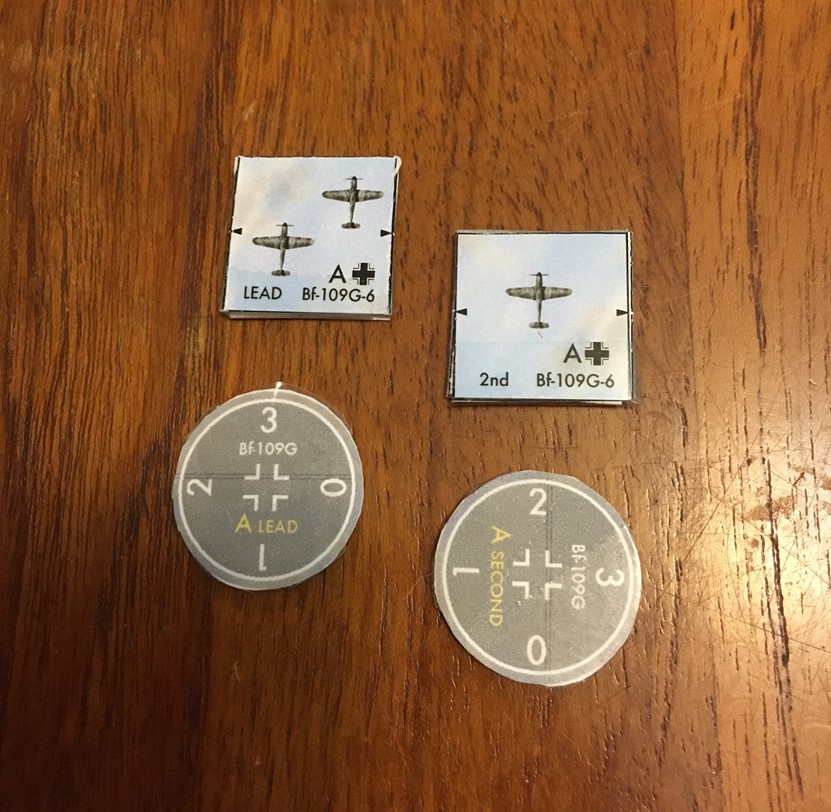
Plane elements and energy counters
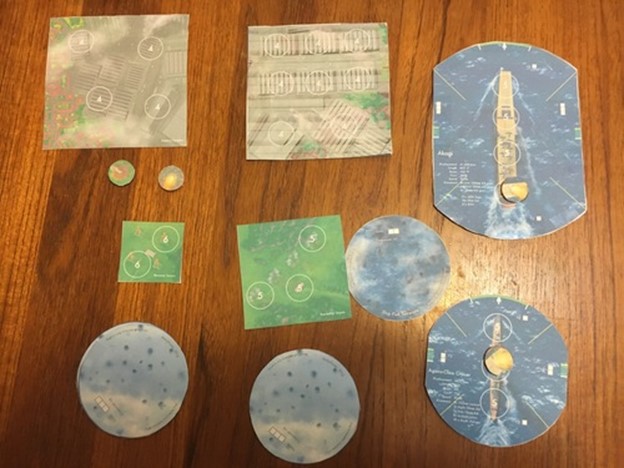
Targets and Flak. Yes, the ships move, and the Akagi launches planes (I’m telling you this game has A LOT of cool stuff going on).
Now we get to the real heart of the game, and what I think makes it special. Each plane has its own performance ruler. The performance ruler basically contains all of the rules for each specific’s plane performance. It shows you how fast the plane can move, how tight it can turn, how much energy it can amass, how many guns it fires and how much damage those guns do. Here is a performance ruler:
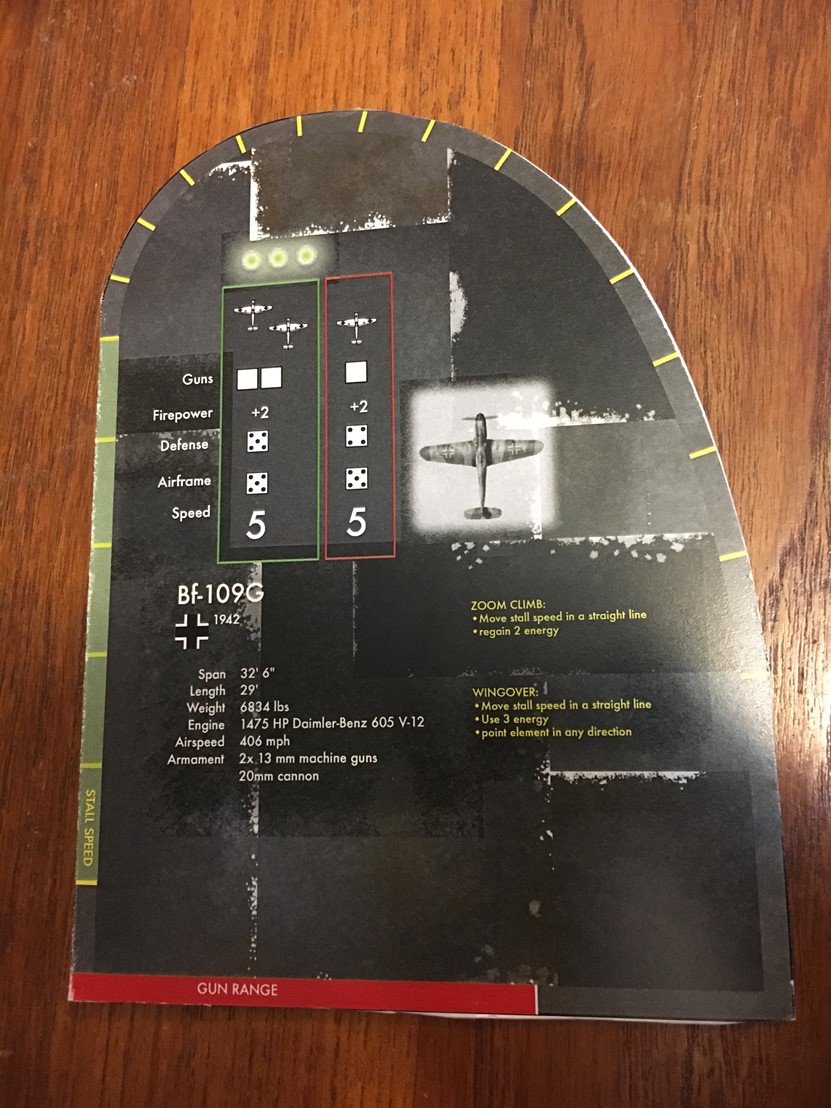
The Bf-109G
Cool isn’t it? Since each plane had different abilities, strengths and weaknesses, each plane’s performance ruler is unique. Of course the bombers have much different performance characteristics than the fighters. Different fighters, though, have different rulers. Some are very similar (not a huge gap between the Bf-109E, F or G), some are very, very different. Here is a comparison between the P-47D Thunderbolt and the A6M2 Zero.
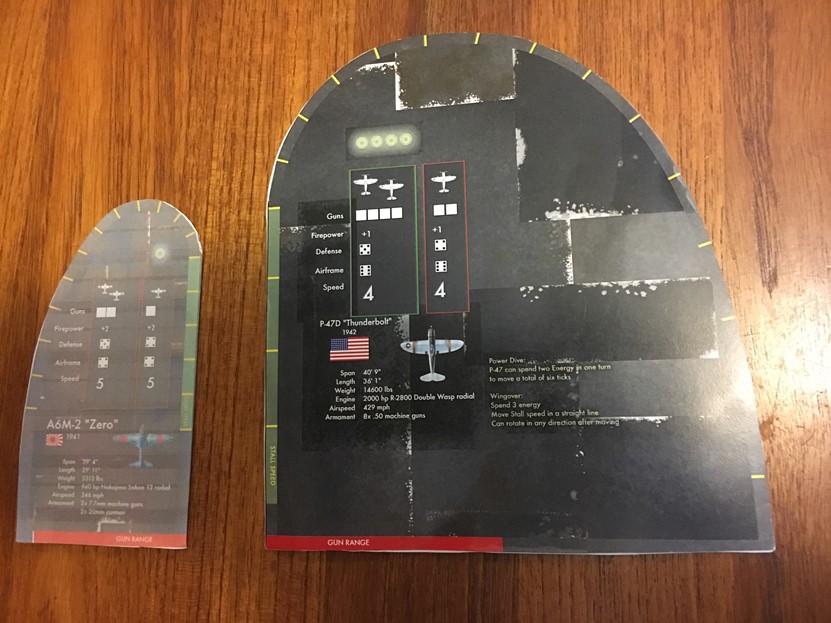
A6M-2 Zero vs. P-47D Thunderbolt
These planes were so different that I use them to highlight how the performance rulers demonstrate what each plane can do. Just a quick glance tells you the basics. The Zero was a super nimble, highly maneuverable but fairly delicate airplane. The Thunderbolt was a huge beast that didn’t turn very well but it moved fast, dished out and absorbed a great deal of punishment.
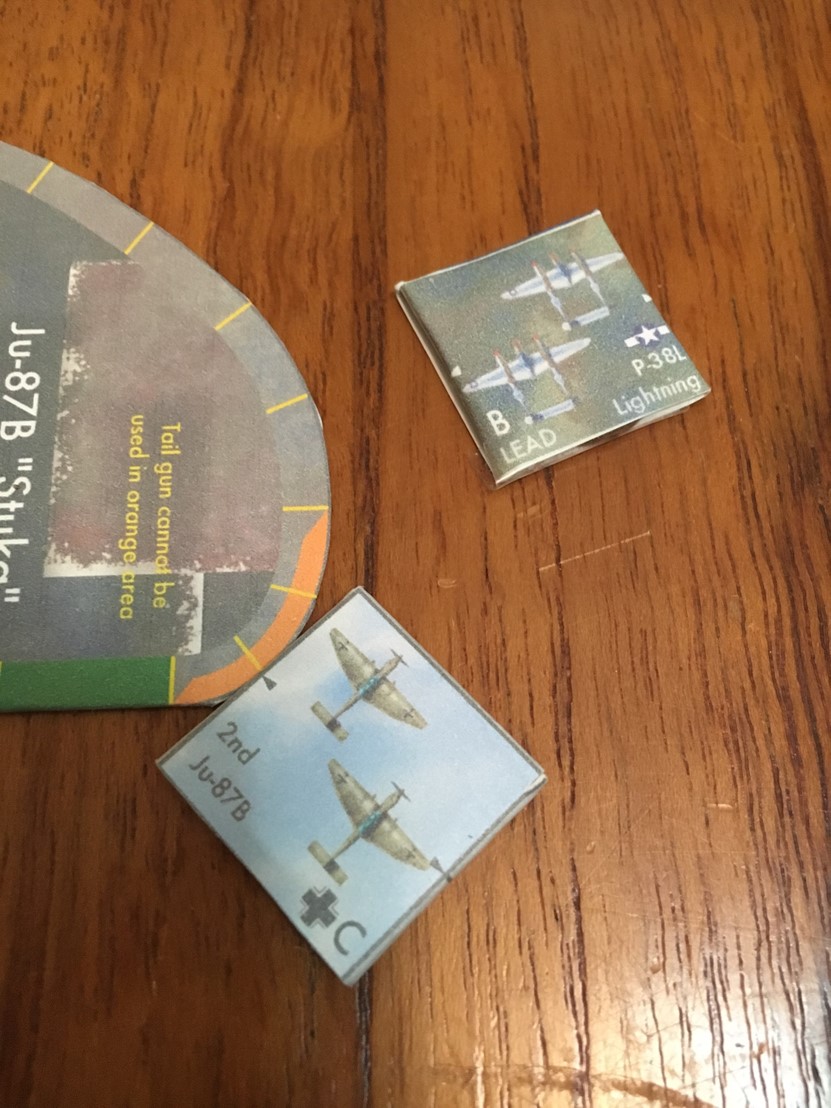
Clearly the author of this review is a person of intelligence and substance, as well as being very handsome. I can tell by the way he rites so guud.